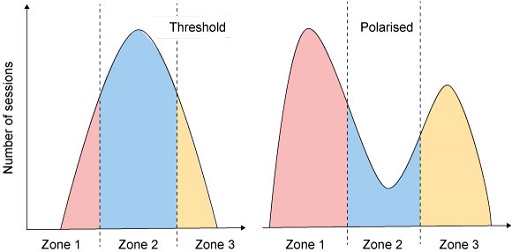6 Programming endurance training
Now that you’ve learned about the different methods available to train for endurance, the next question is: how do these training modalities fit together in a programme? Should an endurance athlete focus on LSDT or should he or she prioritise higher intensities? The distribution of intensities across a training programme (training intensity distribution, or TID) is commonly debated by researchers aiming to identify the optimal TID to maximise performance while minimising the risk of overtraining. Two popular models of TID are polarised training and threshold training, illustrated in Figure 5.
You will look at each model of training and then complete an activity in which you apply this knowledge and choose the optimal model for Petra, an athlete who is looking to complete their first marathon (see Box 1).
Box 1 Case study: Petra
Petra is a 30-year-old recreational runner who regularly completes 2–3 runs a week ranging from 5–10 km. She has just accepted a place to run for a charity in a marathon which is taking place in 6 months’ time. However, usually when trying to increase her distance, she often gets small injuries which prevent her from training and so she now avoids running further than 10 km. Petra only enjoys running and therefore has not included any form of cross training or resistance training in her previous programmes.

